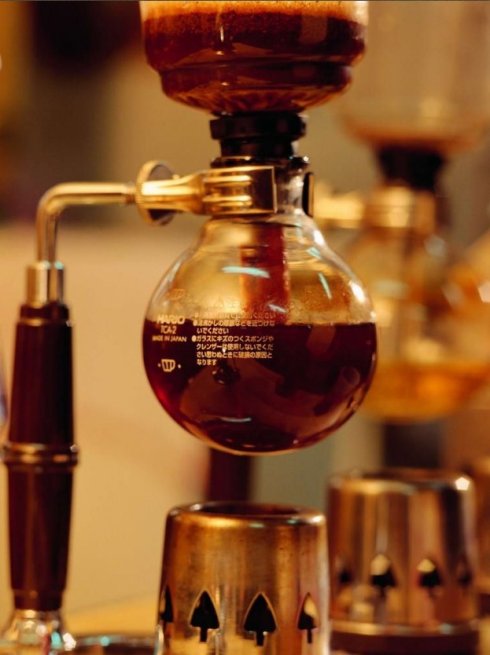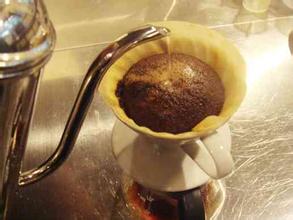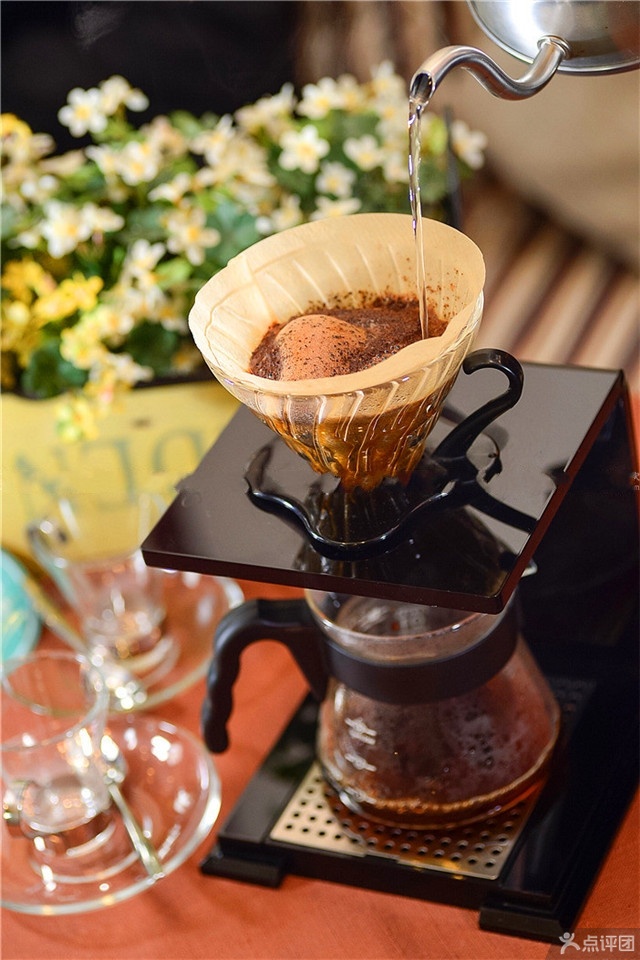Coffee brewing method: Siphon pot history introduction and operation method
The siphon pot uses the siphon principle to make the boiling water into the coffee powder and stew the original flavor of the coffee. Suitable for coffee: slightly sour, medium mellow coffee grindability: slightly thicker than powder, close to special fine granulated sugar. Siphon coffee, which turns the living room into coffee brewed by siphon in a cafe, is a favorite of many coffee fans. Some people say that because it can extract the most perfect part of coffee, especially the characteristics of coffee beans with that kind of refreshing and bright acid, and the acid has a mellow flavor, siphon cooking can give full play to the characteristics of this kind of coffee.
In 1840, a glass test tube in a laboratory triggered the invention of the siphon coffee maker (Syphon). The British took the test tube used in Biya's chemical experiment as a model to create the first vacuum coffee pot. Two years later, Mrs. Bachang of France improved the kettle with a little spring in shape, and the familiar upper and lower convection siphon pot was born.
The siphon coffee maker lived in France for a long time, but never got a good chance to be very popular. It became popular for the first time when it was brought to Denmark and Japan in the mid-20th century. The Japanese like the "tortoise hair" personality of the siphon pot technology standard, carefully deliberating the complex relationship between the size of coffee powder, water and time to mobilize the whole army, and develop a well-regulated coffee path. The aestheticist Danes focused on functional design, Peter, who imported siphon pots from France in the mid-1950 s. Bolton (PeterBodum), who thought French-made pots were expensive and difficult to use, partnered with architect Kaas Klaeson to develop Bodum's first styling siphon pot, which went public under the name "Santos".
Siphon coffee maker always has a hint of mystery in the impression of most people. Siphon coffee pot plays an important role in the history of coffee development in Taiwan. In recent years, the so-called grinding coffee (espresso espresso) is very popular. By contrast, this siphon coffee maker requires higher technology and more cumbersome procedures. In today's industrial and commercial society, there is a tendency to decline gradually, but the mellow flavor of coffee brewed by siphon coffee pot can not be compared with ground coffee brewed by machine.
Most people often have little knowledge of it, or even have the wrong impression, there are usually two extreme views, one is that some people are cautious and frightened about it, and what about the other? It is thought that using a siphon coffee maker is nothing more than boiling the water and stirring the coffee powder; in addition, some people think that the siphon coffee pot looks very dangerous, but as long as it is improperly used, every method of brewing coffee has hidden dangers.
Siphon pot (Syphon), commonly known as "plug wind pot" or "siphon", is a simple and easy-to-use method of coffee brewing, and it is also one of the most popular coffee brewing methods in cafes. Although the siphon kettle has the nickname of "plug wind type", it has nothing to do with the siphon principle, but uses water heating to produce water vapor, causing thermal expansion and cold contraction, pushing the hot water from the lower sphere to the upper pot, and then sucking back the water from the upper pot after the lower pot cools. Does that sound mysterious? Not at all. Follow the following steps and you will understand!
Let's take the siphon pot of TIAMO for 3 people as an example. The corresponding amount of water for 2 people is 250ml. 3 people corresponding to the proportion of water is 400ml gouache, recommended ratio: 2 people 20 grams of coffee powder 3 people 30 grams of coffee powder preparation work:-freshly roasted coffee beans: coffee made in a siphon pot, try to choose medium and light roasted coffee beans, the taste will be better.
-TIAMO siphon pot group: the quality of the siphon pot is very important, please choose a guaranteed siphon pot brand.
-Bamboo spoon for mixing
-Taiwan is shaking the infrared heating furnace: no open fire, safe and stable (if not, add 95% alcohol lamp + lighter)
Production method:
First, fill the water-hook the filter element and load the lower pot into the boiling hot water to the "2" icon mark. Put the filter element into the pot, hold the end of the chain with your hand, and gently hook it to the end of the glass tube. Be careful not to release the hook suddenly, so as not to damage the glass tube of the upper pot.
Second, ignite-insert the pot diagonally-wait for the water temperature to turn on the heating furnace (or light the alcohol lamp), insert the upper pot diagonally, and let the rubber edge against the spout of the next pot (rest assured that the upper pot will not fall) so that the chain is soaked in the water of the lower pot. Then boil the water and wait for the pot to produce continuous bubbles. Just tilt the upper pot, don't let it clog the next pot.
Grind the coffee beans and pour the coffee powder into the pot. While waiting, we are ready to grind coffee beans. We take the Xiaofei Eagle bean grinder as an example. The grinding scale is 2.5 powder and 20 grams. Pour the ground curry powder into the pot and make sure it is smooth.
Fourth, upright-insert into the upper pot when continuous small bubbles appear in the lower pot, when the temperature is about 95 degrees. When the temperature is higher than 95 degrees, there are large bubbles, and the temperature has reached about 98 degrees. Straighten the upper pot, shake it left and right and press it down slightly so that it is gently stuffed into the lower pot, continue to heat, and the water begins to rise into the upper seat. due to heat diffusion, the temperature is exactly between 90 and 95 degrees.
Fifth, let the water in the lower pot rise completely to the upper pot due to the different cup volume, the water filling time is also different, usually between 30 seconds and 1 minute.
Sixth, the first mixing (cross mixing) after the completion of the water in the pot, start the timing, and stir for the first time. Stir gently to avoid violent stirring. Fresh coffee powder will float on the surface to form a powder layer. At this time, the coffee powder needs to be stirred so that the flavor of the coffee can be completely extracted. The correct stirring action is to move the bamboo spoon in the cross direction and press the coffee powder floating on the water surface under the water surface with the "strong way" of downward pressure.
7. Second stirring-flameout after the first stirring, time 30 seconds, make the second stirring, after stirring, you can turn off the heater (or extinguish and remove the alcohol lamp). We recommend that you let the coffee flow naturally. Improper wiping with a damp cloth can easily cause the next pot to crack. If your coffee is fresh enough, there will be a lot of light brown foam in the pot.
After the coffee is sucked into the lower pot, hold the upper pot in one hand and the handle of the lower pot in the other, gently shake the upper pot to the left and right, and then pull out the upper pot and the lower pot. Pour the coffee into a warm coffee cup and enjoy the mellow coffee that you have prepared by hand.
The above is the most basic and stable production method, of course, the siphon pot production method has a lot of knowledge, interested children's shoes can refer to the following methods to change the taste of your coffee.
First, wet cloth cooling method: the coffee liquid begins to fall to the lower seat. In the past, you can quickly wipe the bottom of the lower glass with a wet towel, especially where it was overheated just now, and you can hear the water on the wet towel "sniffing" when it touches the wall of the lower glass. This is a temperature control process that can not be ignored. At this time, the temperature of the overheated position of the lower seat is above 100 degrees. If the coffee liquid comes into contact with this high temperature at this time, it will be scalded. When you drink it, you will feel bitter and bitter. The coffee liquid falls quickly and moves the wet towel to the next cup near the bottleneck. At this time, it is to cool the air in the lower seat. The role of cold shrinkage can have a "suction" effect on the coffee liquid in the upper seat, making the extraction more complete. With regard to the wet cloth cooling method, adding the lid to the upper pot is a decompression action, which should slow down the speed of coffee falling into the next pot, increase the extraction rate in the middle and back section, and increase the taste saturation and complexity. The wet cloth cooling method speeds up the coffee falling into the next pot, reduces the extraction time, increases transparency, and makes the sour aroma brighter and clearer. It depends on what kind of coffee you want to make and decide how you use it.
Second, about adding powder first, adding powder first is to put the coffee powder into the pot first, and then put the water on the pot. The requirement of controlling the firepower by adding powder first is relatively high, and the firepower should be adjusted to an appropriate size while the water rises, so as to avoid a large number of bubbles breaking and steaming. At the same time, it is best to boil a pot of water in advance to test whether the position of the filter is in the right place. If it is not in the middle, it will produce a large number of continuous bubbles. The advantage of adding powder first is that there is a gradual warm and wet process for coffee powder, which can reduce the number of circles stirred for the first time, which is more conducive to the formation of steaming effect. However, the temperature control will be poor, so the timing of inserting the upper pot into the next pot will be particularly important, that is to say, it seems simple to add powder first, but in fact, it requires more practical experience than the latter. Adding powder is the opposite of adding powder first, and then adding powder is to let the water in the next pot rise completely to the top, and then put in the coffee powder. Before adding powder, we can have plenty of time to reduce the firepower of the fire source just enough to support the water on the pot will not fall back. Then adjust the position of the filter to keep it in the middle, and finally wait a few minutes to let the water temperature drop a little bit. In general, when the water in the lower pot rises to the top, the water temperature will be about 95-90 degrees, so we can lower the water temperature by about 2-5 degrees and then put in the coffee powder. Generally speaking, the higher the water temperature, the more bitter and even scorched the coffee will be, while the lower the temperature is, the more obvious the sour taste and aroma will be, but too low will also reduce the alcohol content and make the sour taste very exciting. therefore, it is very important to choose a suitable water temperature for coffee powder according to the extracted coffee.

Source:
The blog of Mavericks Coffee
Important Notice :
前街咖啡 FrontStreet Coffee has moved to new addredd:
FrontStreet Coffee Address: 315,Donghua East Road,GuangZhou
Tel:020 38364473
- Prev

Boutique coffee beans: the origin of the third wave of boutique coffee to understand the history of coffee
If you love coffee and have always been keen on adding milk and sugar, or only pursuing the sweet coffee of caramel macchiato, or fancy coffee with cream and chocolate sauce. Then you may soon be OUT! Because at present, a new wave of coffee has hit, and the dark tide is surging in the land of China, it is the third wave of coffee revolution boutique coffee. Coffee, it's like flowing.
- Next

Coffee brewing method: the historical origin and operation method of hand-made coffee
I like to make myself a cup of coffee at the beginning of the day, the beautiful melody of the bean grinder and the slow and graceful flow of the thin-mouth pot, as if gently opening the curtain of the day. Making coffee by hand allows you to quietly focus on such a wonderful thing. I like to collect my thoughts and adjust my mood in this quiet process. I feel as excited as waiting for the sunrise.
Related
- What is the meaning of lactic acid fermentation with coffee bean treatment?
- How to judge the state of foam by sound?
- How does the latte pull out the unicorn pattern? Come to get for a little trick to improve the flower pull!
- Will flower pulling affect the taste of the latte?
- Do you know the history of coffee?
- The difference between honey treatment and sun washing what is raisin honey treatment?
- What kind of milk can a novice use to make coffee foam to keep the foam longer? The correct method and skills of milking tutorial sharing
- Why do washed coffee beans taste sour? Flavor characteristics of washed Coffee
- Introduction to the skill of how to practice the size and height of water injection around the circle of hand-brewed coffee
- How do beginners practice coffee flower drawing from scratch?

